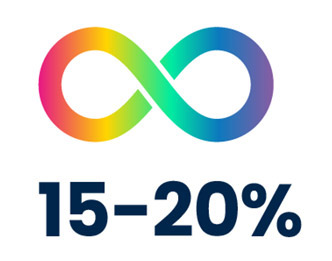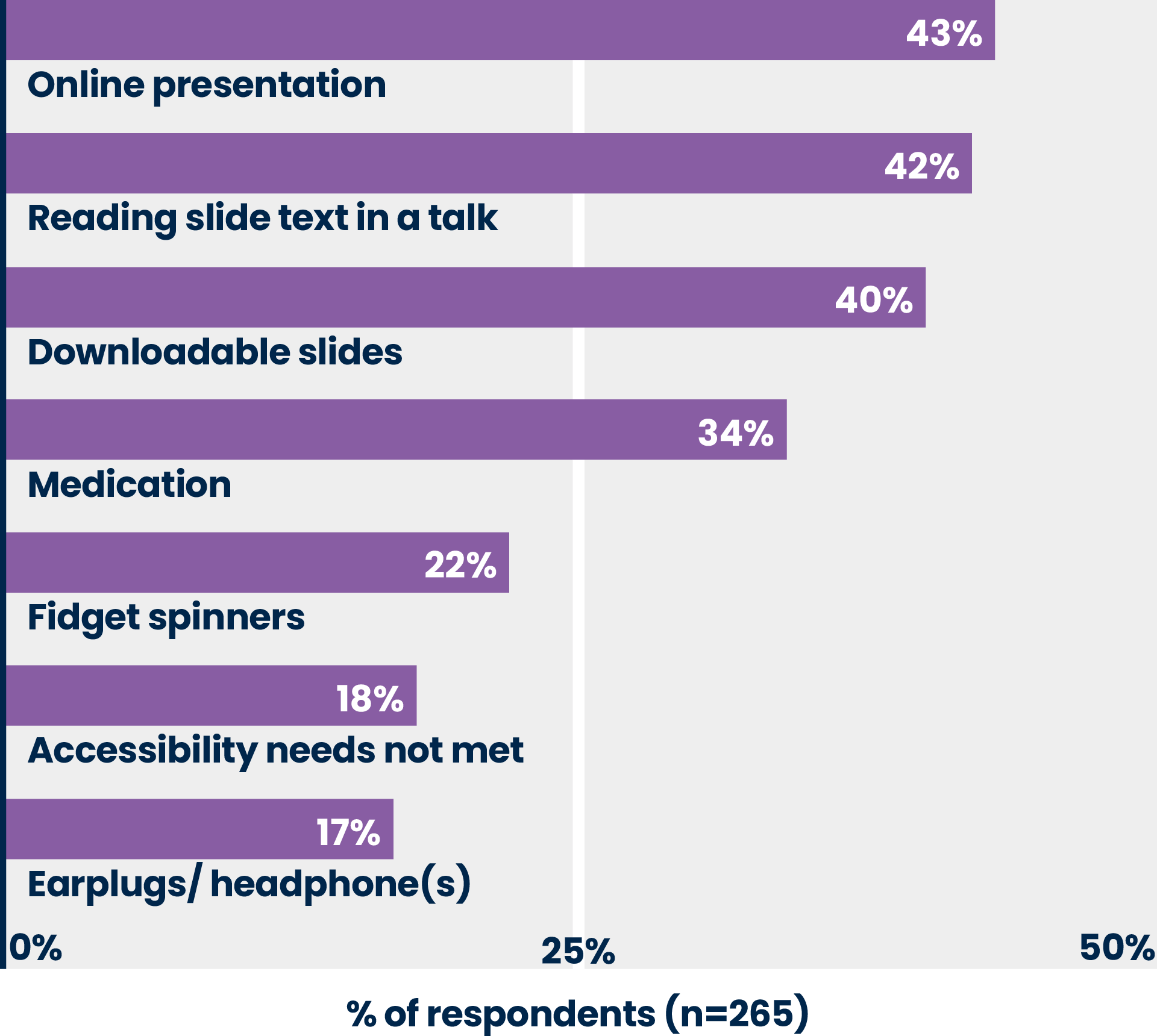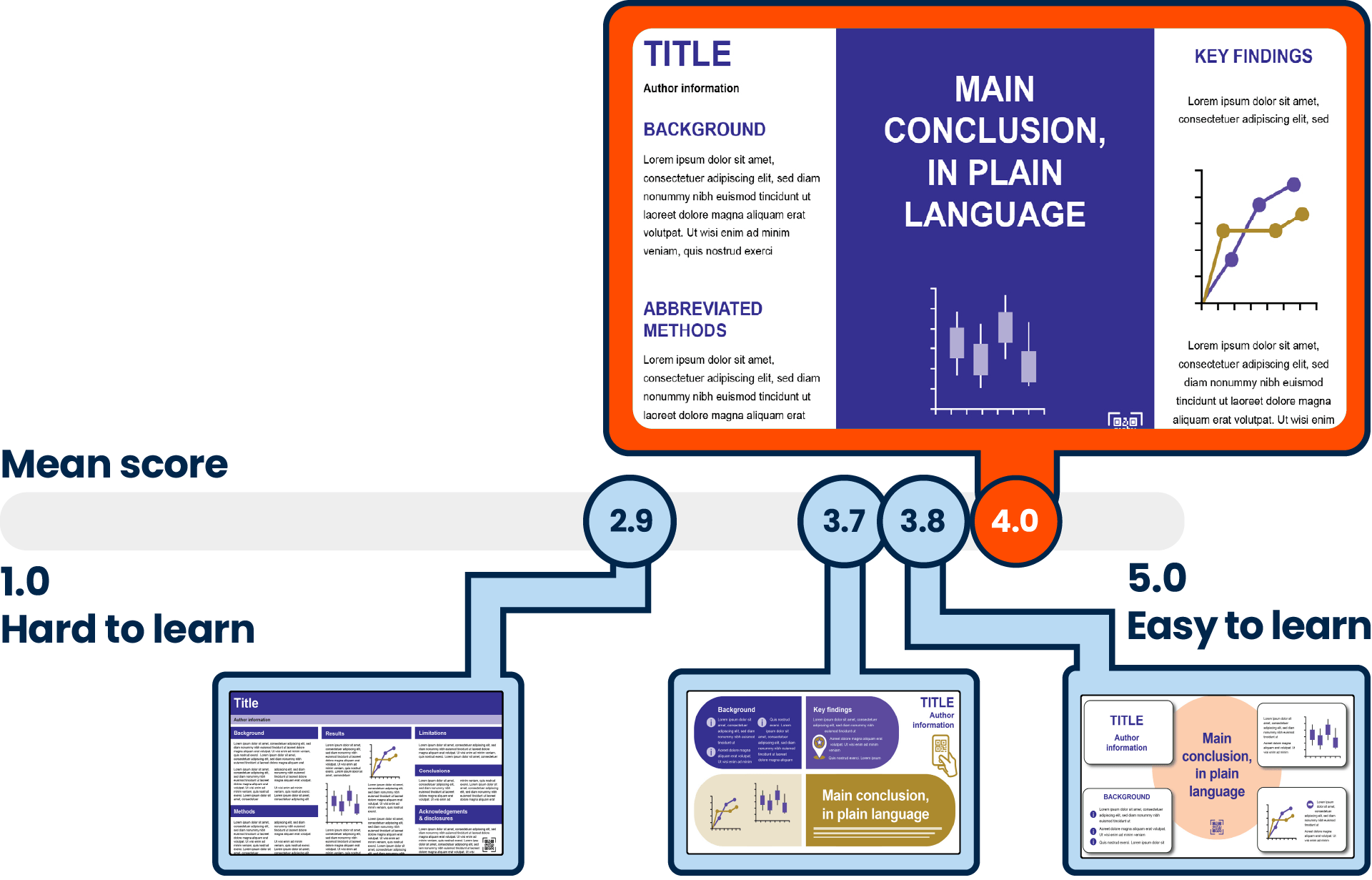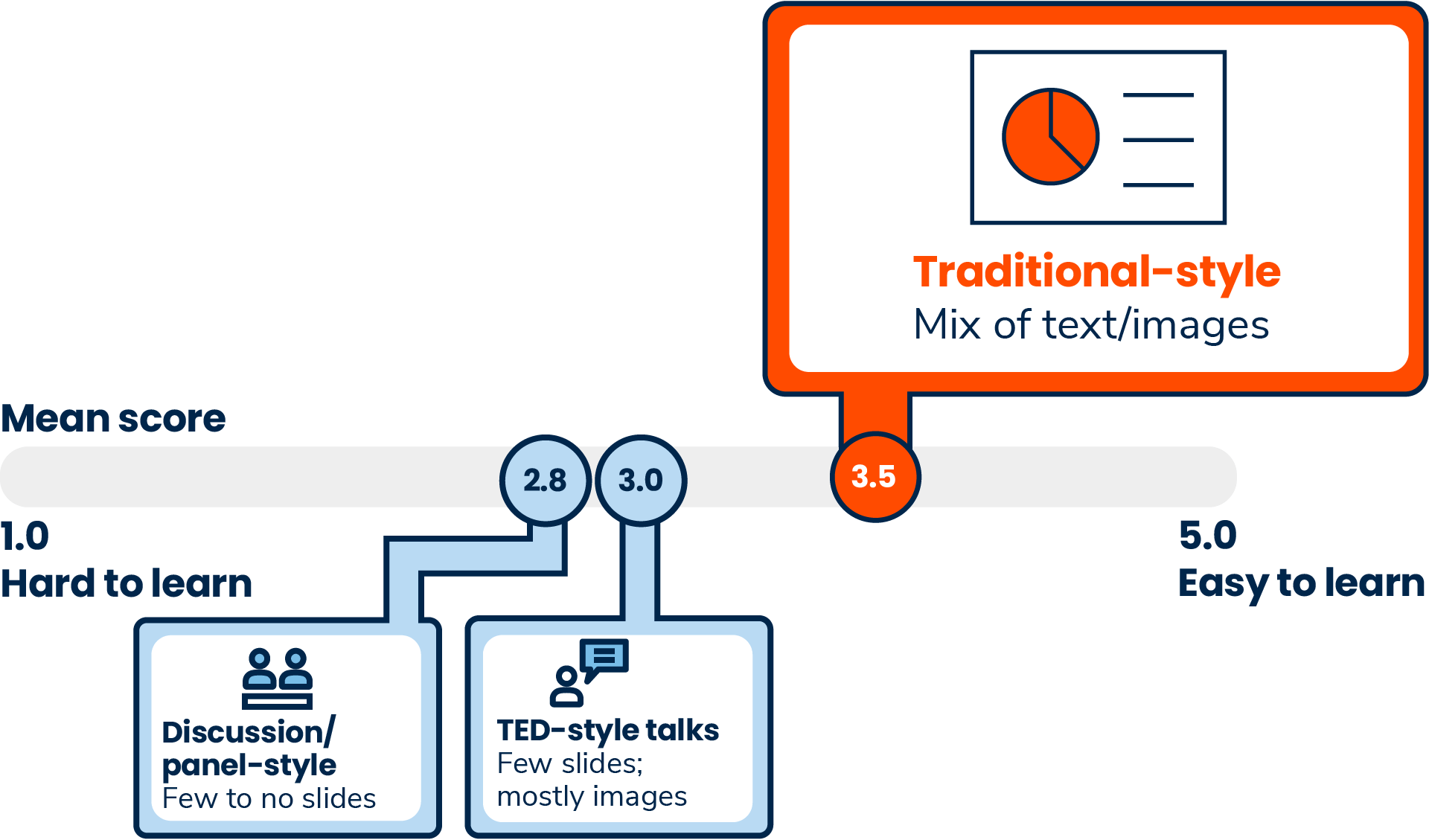-
FEATURED RESOURCES
Note: use pinch and zoom to view images on mobile devices
Are conference presentations accessible? An overview by Emily L Messina -
KEY TAKEAWAYS
Note: use pinch and zoom to view images on mobile devices
Conference attendees with accessibility needs want:
- Online access
- Uncluttered posters
- Slides with mixed text/images
-
BACKGROUND
Note: use pinch and zoom to view images on mobile devices
Many conference attendees need greater access1
Identify as disabled:2

Are neurodivergent:3

-
METHOD
Note: use pinch and zoom to view images on mobile devices
We distributed an online survey to assess general, neurodivergent, D/deaf, and disabled conference attendees:
- Accessibility needs
- Preferred presentation formats
- Recommended improvements
-
SURVEY POPULATION
Note: use pinch and zoom to view images on mobile devices
Of 493 total respondents, 57% of conference attendees reported 1 or more accessibility need and 18% reported their needs were unmet
Reported accessibility needs/disabilities

Top reported management strategies/tools

-
POSTER FORMATS
Note: use pinch and zoom to view images on mobile devices
Respondents favored designs featuring less visual clutter

-
TALK FORMATS
Note: use pinch and zoom to view images on mobile devices
Respondents favored traditional style over TED-style talks and panels

-
QUOTES FROM RESPONDENTS
Note: use pinch and zoom to view images on mobile devices
"For the love of god have enough chairs, and let people sit down to look at posters"
"Include enough text so people with different languages can follow along"
"Almost accurate [captions] is no good. Something that looks like access but isn’t access is worse, because now nobody feels bad about the lack of access. In fact, they’re kind of proud of what they did. However, it is garbage and not actual access, and they’re angry with my lack of appreciation" -
ADDITIONAL RESOURCES
Note: use pinch and zoom to view images on mobile devices
Here is a list of additional resources related to this poster that you may find useful.
Presented at the 19th Annual Meeting of ISMPP, April 24-26, 2023. Washington, DC
- Sousa BJ & Clark AM. 2019. Int J Qual Methods. 18: 160940691986237
- Sarju PJ. 2021. Chem. Eur. J. 27, 10489–10494
- NIH. 2022. https://dceg.cancer.gov/about/diversity-inclusion/inclusivity-minute/2022/neurodiversity
